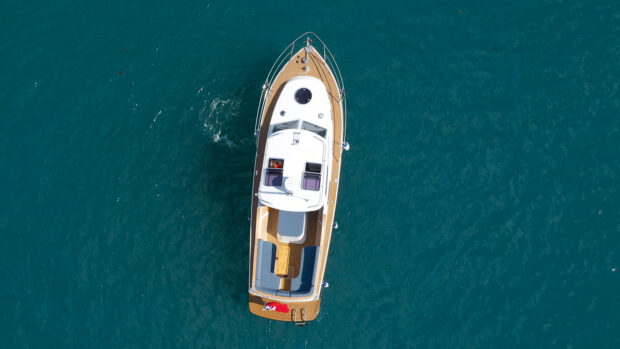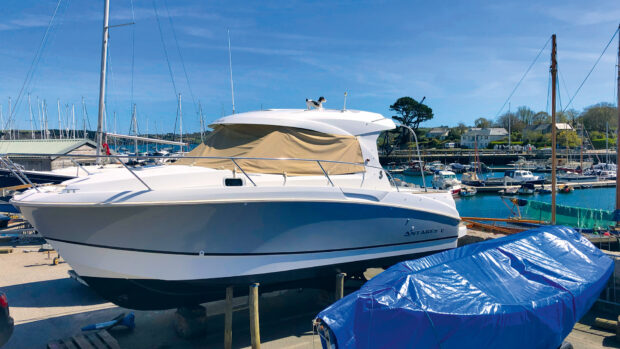Arriving at a berth single-handed in a big boat is a slightly unnerving moment. Jon Mendez shares his top tips for berthing solo...
Until you see the berth, you don’t know for certain if it will be wind on or off and what the tide or current is doing. Of course, tide tables and weather forecasts give a good indication but the conditions around marinas can be very changeable so a drive-by is usually the best way to assess exactly what is helping or hindering.
A drive-by of this berth established that it had a slight ebb tide and a breeze pushing the boat off the berth. So ideally you need to approach from a downwind/downtide position and use the momentum of the boat to counteract the elements and slide into the berth, allowing yourself enough time to leave the helm and either lasso the cleat or step ashore with the stern line before the boat starts to get pushed back out.
Larger motorboats have one big advantage over smaller ones – weight. Used correctly that weight can be turned into momentum to assist with manoeuvring. The hull shape and drive system can also play a large part in how the boat behaves.
A deep-draught displacement or semi-displacement boat tends to be easier to control and less prone to windage than a lighter planing boat, while shafts tend to be more predictable than IPS pods, outdrives or outboards.
My suggestion for this berth is to deliberately drive the bow past and down element of the berth then bring the boat to a stop so that it’s at roughly 30 degrees to the pontoon ready to go stern first into the berth.
Article continues below…

VIDEO: How To – Leave a berth using springs

How to dock a boat: Three simple methods for single shaftdrive boats explained
With the helm centred, use alternate engines astern to start the momentum while using a transit astern to keep a check on the angle. The outside (port) engine takes the stern towards the berth, the inside (starboard) engine takes it away.
When happy with the angle you can also use a brief touch of both astern to give that positive momentum. As the starboard quarter gets close, use a click of starboard astern to take the stern out, that also brings the bow closer and gives more momentum towards the berth.
You can assist that bow swing to starboard with the bow thruster. Then as the boat comes parallel, use starboard ahead to stop the boat and bring the stern close enough to tie up.
With a bit of practice, you should be able to hold it stationary fore and aft while it’s still sliding gently onto the pontoon. This allows enough time to leave the helm, make your way back to the stern and lasso the cleat or step ashore with the stern line.
You can then make your way forward to collect the bow line from where you’ve left it hanging over the rail and attach it to a cleat before adding some springs.










